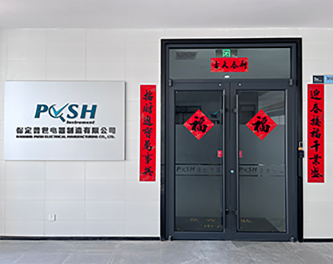 English
English



-
 Afrikaans
Afrikaans -
 Albanian
Albanian -
 Amharic
Amharic -
 Arabic
Arabic -
 Armenian
Armenian -
 Azerbaijani
Azerbaijani -
 Basque
Basque -
 Belarusian
Belarusian -
 Bengali
Bengali -
 Bosnian
Bosnian -
 Bulgarian
Bulgarian -
 Catalan
Catalan -
 Cebuano
Cebuano -
 China
China -
 China (Taiwan)
China (Taiwan) -
 Corsican
Corsican -
 Croatian
Croatian -
 Czech
Czech -
 Danish
Danish -
 Dutch
Dutch -
 English
English -
 Esperanto
Esperanto -
 Estonian
Estonian -
 Finnish
Finnish -
 French
French -
 Frisian
Frisian -
 Galician
Galician -
 Georgian
Georgian -
 German
German -
 Greek
Greek -
 Gujarati
Gujarati -
 Haitian Creole
Haitian Creole -
 hausa
hausa -
 hawaiian
hawaiian -
 Hebrew
Hebrew -
 Hindi
Hindi -
 Miao
Miao -
 Hungarian
Hungarian -
 Icelandic
Icelandic -
 igbo
igbo -
 Indonesian
Indonesian -
 irish
irish -
 Italian
Italian -
 Japanese
Japanese -
 Javanese
Javanese -
 Kannada
Kannada -
 kazakh
kazakh -
 Khmer
Khmer -
 Rwandese
Rwandese -
 Korean
Korean -
 Kurdish
Kurdish -
 Kyrgyz
Kyrgyz -
 Lao
Lao -
 Latin
Latin -
 Latvian
Latvian -
 Lithuanian
Lithuanian -
 Luxembourgish
Luxembourgish -
 Macedonian
Macedonian -
 Malgashi
Malgashi -
 Malay
Malay -
 Malayalam
Malayalam -
 Maltese
Maltese -
 Maori
Maori -
 Marathi
Marathi -
 Mongolian
Mongolian -
 Myanmar
Myanmar -
 Nepali
Nepali -
 Norwegian
Norwegian -
 Norwegian
Norwegian -
 Occitan
Occitan -
 Pashto
Pashto -
 Persian
Persian -
 Polish
Polish -
 Portuguese
Portuguese -
 Punjabi
Punjabi -
 Romanian
Romanian -
 Russian
Russian -
 Samoan
Samoan -
 Scottish Gaelic
Scottish Gaelic -
 Serbian
Serbian -
 Sesotho
Sesotho -
 Shona
Shona -
 Sindhi
Sindhi -
 Sinhala
Sinhala -
 Slovak
Slovak -
 Slovenian
Slovenian -
 Somali
Somali -
 Spanish
Spanish -
 Sundanese
Sundanese -
 Swahili
Swahili -
 Swedish
Swedish -
 Tagalog
Tagalog -
 Tajik
Tajik -
 Tamil
Tamil -
 Tatar
Tatar -
 Telugu
Telugu -
 Thai
Thai -
 Turkish
Turkish -
 Turkmen
Turkmen -
 Ukrainian
Ukrainian -
 Urdu
Urdu -
 Uighur
Uighur -
 Uzbek
Uzbek -
 Vietnamese
Vietnamese -
 Welsh
Welsh -
 Bantu
Bantu -
 Yiddish
Yiddish -
 Yoruba
Yoruba -
 Zulu
Zulu
Investigation of Surface Partial Discharge Phenomena in Electrical Insulation Systems
Understanding Surface Partial Discharge Insights and Implications
Surface partial discharge (PD) is a phenomenon that occurs in electrical insulation systems when a localized electric field exceeds the dielectric strength of the material. This can lead to partial breakdown and the creation of conductive paths along the surface of insulators, which can have significant implications for the reliability and longevity of electrical equipment. Understanding surface PD is essential for engineers and technicians in the field of electrical engineering, particularly in high-voltage applications.
What is Surface Partial Discharge?
Partial discharge refers to the localized discharge of electrical energy within an insulating medium. It does not completely bridge the gap between the conductive surfaces but signifies insulation degradation. Surface PD typically occurs under high voltage conditions when imperfections exist on the surface of insulation materials. These imperfections can include dirt, moisture, or manufacturing defects that create weakened areas, allowing for surface discharges to occur. This discharge manifests as tiny sparks or corona phenomena that are often undetectable to the naked eye.
Importance of Monitoring Surface PD
Monitoring surface PD is crucial for several reasons
1. Predictive Maintenance Regular monitoring can help predict the remaining life of insulation systems. Detecting surface PD early allows for timely maintenance or replacement before catastrophic failures occur.
2. Safety Surface PD can lead to insulation failures, which may result in electrical arcs or fires, posing serious safety risks. Understanding and monitoring PD activity can enhance safety protocols in electrical installations.
3. Cost Efficiency Addressing issues related to surface PD before they escalate into major problems can save organizations significant costs associated with repairs, equipment downtime, and safety incidents.
surface partial discharge

Measuring Surface Partial Discharge
Measuring surface PD involves using specialized equipment that can detect the electrical discharges occurring on the surfaces of insulators. Common methods include
- Ultrasound Testing This method utilizes high-frequency sound waves to detect the sound produced by partial discharges. It is non-invasive and allows for real-time monitoring of PD activity.
- Electrical Measurements This involves measuring the voltage and current variations caused by PD which can provide insights into the severity and location of discharges.
- Optical Methods Infrared or ultraviolet cameras can capture the light emitted by discharges, providing visual evidence of PD occurrences.
Challenges and Solutions
One of the main challenges associated with surface PD is that it often occurs in hard-to-reach places or environments where conventional monitoring equipment cannot be easily deployed. Solutions include the development of portable devices and the integration of advanced sensors in insulation designs that continuously monitor PD activity.
Furthermore, understanding the environmental conditions that contribute to surface PD—such as humidity and temperature—is critical. Engineers must consider these factors when designing insulation systems to ensure they are robust under varying operational conditions.
Conclusion
Surface partial discharge is a critical phenomenon that poses risks to electrical insulation systems and the overall safety and efficiency of electrical installations. Through the diligent monitoring and understanding of PD activities, engineers can implement effective maintenance strategies, enhance safety protocols, and optimize the performance of electrical equipment. As technology advances, the methods for measuring and mitigating surface PD will continue to improve, allowing for greater reliability in high-voltage applications and contributing to the longevity of electrical systems. Understanding and addressing surface PD should be an integral part of every electrical engineer's strategy for managing insulation systems in today's demanding energy landscape.
-
Testing Equipment Industry Sees Major Advancements in 2025: Smart & Precision Technologies Lead the WayNewsJun.06,2025
-
Applications of Direct Current Generators in Renewable Energy SystemsNewsJun.05,2025
-
Hipot Tester Calibration and Accuracy GuidelinesNewsJun.05,2025
-
Digital Circuit Breaker Analyzer Features and BenefitsNewsJun.05,2025
-
Benefits of Real-Time Power Quality Monitoring Devices for Industrial EfficiencyNewsJun.05,2025
-
Earth Fault Loop Testing in High-Rise Building Electrical SystemsNewsJun.05,2025



